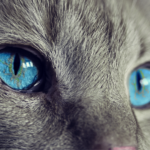Cats are fascinating creatures with a plethora of intriguing behaviors. Among these, one that often perplexes cat owners is the tendency of some felines to scratch the floor after eating. While this might seem like an odd ritual, it is deeply rooted in natural instincts and feline behavior. In this comprehensive article, we will explore the reasons behind this scratching behavior, its evolutionary significance, and what it means for your pet’s health and well-being.
Understanding Cat Behavior
To truly grasp why cats engage in seemingly peculiar behaviors such as scratching the floor post-meal, it’s essential first to understand their natural instincts and behaviors. Cats, as natural hunters and solitary creatures, have developed various rituals and patterns of behavior that help them navigate their environment.
The Importance of Scratching
Scratching is vital for a cat’s well-being for several reasons:
Claw Maintenance: Scratching helps cats shed the outer sheath of their claws, keeping them sharp and healthy.
Territory Marking: They have scent glands in their paws, and scratching leaves both a visual mark and deposits scent, signaling territorial boundaries.
Physical Stretching: Scratching allows cats to stretch their muscles and maintain flexibility.
Understanding the Post-Meal Behavior
After eating, the behavior of scratching the floor can be puzzling. It seems to be an extension of their natural scratching instinct. Let’s delve deeper into the potential reasons behind this action.
Reasons Why Cats Scratch the Floor After Eating
1. Instinctual Behavior
Cats are natural predators, and a significant aspect of hunting is the act of covering their tracks. In the wild, once they’ve consumed a meal, they may instinctively scratch the ground to cover the scent of their prey, reducing the chance of other predators or scavengers picking up on their presence. This instinctive behavior can carry over into domesticated cats, manifesting in different ways, such as floor scratching.
2. Marking Territory
As social creatures, even solitary hunters, cats often have an inherent need to assert their territory. Scratching, as previously mentioned, allows them to leave their scent in an area. After eating, your cat may scratch the floor to mark the area where they’ve just eaten as their territory, signaling to other animals (including you) that the food source is theirs and theirs alone.
3. Displacement Behavior
Cats can also exhibit displacement behavior when they are feeling anxious or agitated. After eating, if your cat feels as though their meal was threatened (perhaps by the presence of another pet or changes in their environment), they might scratch the floor as a way to relieve that stress and display dominance in their feeding area.
4. Comfort and Exploration
The floor can represent stability and comfort for cats. After eating, they may scratch the floor as part of their exploration process. The tactile sensation of scratching can provide them comfort, particularly after a satisfying meal. This activity can also be a way of re-establishing their territory or settling down after the excitement of food.
5. Natural Grooming Ritual
After feeding, cats often groom themselves. Scratching the floor can be an extension of their grooming rituals. It functions much like a human preparing for relaxation or tidying up after a meal; it’s a way for them to feel settled and calm.
6. Attention-Seeking Behavior
Cats are known as “social eaters,” and some may scratch the floor to gain your attention. If your cat scratches the floor, it might be trying to signal you to engage with them, either through playtime or simply by acknowledging their presence after a satisfying meal.
7. Fun, Play, and Exercise
Sometimes, the act of scratching is simply an outlet for energy. After eating, cats can feel quite full and require a way to expend excess energy. Scratching the floor can be an engaging way to do so, especially if they feel studious or playful post-meal.
What You Can Do as a Cat Owner
Understanding why your cat scratches the floor after eating can enhance your relationship with your feline friend. Here are some ways to manage or redirect this behavior if it concerns you.
1. Provide Scratching Posts
Having designated scratching posts around the house can help channel your cat’s scratching instincts in a more appropriate direction. Be sure to choose scratching posts that are tall enough and made from materials cats naturally enjoy (like sisal or cardboard).
2. Create a Calm Eating Environment
Ensure the area where your cat eats is calm and stress-free. If there are other pets or loud noises, consider adjusting the eating area to minimize distractions. A quiet, comfortable space can reduce the instinctual need to scratch the floor after eating.
3. Engage in Interactive Play
Make sure your cat receives plenty of playtime throughout the day. Interactive games and play sessions can help satisfy their energy needs and provide mental stimulation, reducing the chances of scratching as a means of expending energy.
4. Observe and Document
If you notice unusual scratching behavior, observe when it happens, how intense it is, and any potential triggers. Keeping a log can help you identify patterns or changes that could warrant a discussion with your veterinarian.
5. Consultation with a Veterinarian
If your cat’s behaviors seem excessive or are accompanied by signs of stress or anxiety, consult with a veterinarian or an animal behaviorist. They can help you understand your cat’s behavior better and provide tailored solutions.
The Relationship Between Eating Habits and Behavior
It’s also essential to explore how your cat’s diet and eating habits influence its behavior, including scratching.
Nutrition Matters
The quality and type of food you provide can impact your cat’s overall behavior. Here are a few considerations:
High-Quality Diet: Ensure that your cat is eating a balanced, high-quality diet to support its overall health and well-being.
Feeding Schedule: Establishing a regular feeding schedule can help create a sense of routine and stability for your cat, which might reduce anxiety-related scratching behaviors.
Food Variety: Offering different types of food (wet and dry) can cater to your cat’s preferences and encourage a more satisfying eating experience.
Hydration
Ensure your cat has access to plenty of fresh water. Dehydration can cause discomfort, leading to unusual behaviors. Sometimes, floor scratching can arise from a cat’s dissatisfaction with its water source or lack of hydration.
The Psychological and Emotional Impact of Scratching
While scratching serves various physical functions, it also contributes to your cat’s emotional and psychological health.
Stress and Anxiety
Like humans, cats can experience stress or anxiety, and these feelings can manifest in their behaviors. Scratching the floor post-eating could serve as a coping mechanism, a form of self-soothing in moments of stress. Ensuring a calm home environment and recognizing stressors (such as loud noises, changes in routine, etc.) can help mitigate this behavior.
Behavioral Enrichment
Cats require mental stimulation to thrive. If they don’t receive enough enrichment in their lives, they may express that through repetitive behaviors like scratching the floor. Offering different toys, climbing spaces, and social interactions can keep your cat engaged and fulfilled.
Building Trust and Security
If your cat feels secure and trusted in its environment, it may scratch less for comfort after meals. Spending quality time with your cat and establishing routines can foster that sense of safety, reducing stress-related behaviors.
Conclusion
The behavior of scratching the floor after eating is a multifaceted one rooted in instinct, communication, territory marking, and comfort-seeking behaviors. Understanding the motivations behind this behavior can not only enrich your relationship with your feline friend but can also aid in ensuring a happy and healthier living environment for both pet and owner.
While scratching the floor might be a harmless quirk for many cats, it can also indicate anxiety or stress in some cases. Providing a supportive environment, alongside proper nutrition and mental stimulation, will result in a well-adjusted, less anxious cat.
If scratching becomes excessive or problematic, it is wise to consult with a veterinarian or a feline behavior specialist to gain more insight and assistance tailored to your cat’s unique situation. Overall, being observant and understanding your cat’s needs is the best way to foster a happy, healthy, and well-scratched home.
Featured Image Credit: Pixabay


